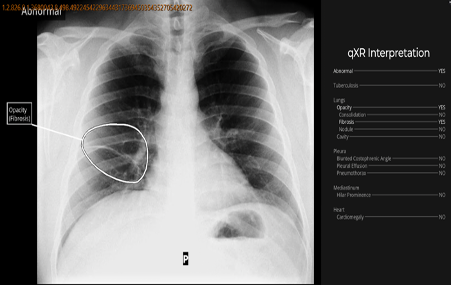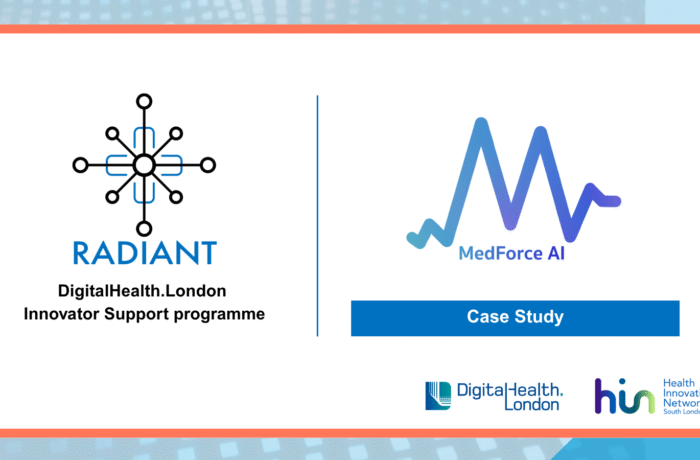Letting AI take the strain
Posted on
Dr Sarah Blake, a cardiology registrar at Guys’ and St Thomas’ Hospital, London and one of the first cohort of Clinical Artificial Intelligence fellows, tells of the benefits that can be gained from using AI tools in the NHS.
Artificial intelligence in the stretched NHS
As a clinician in the NHS, one of the most frustrating parts of my job is the endless paperwork. Although it is now mostly digital, doctors seem to spend most of their time completing patient records, looking up imaging results, and ordering tests. I suspect most of us wish there were ways of increasing efficiency to allow us to spend more time with patients. With an ageing population and increasingly stretched resources, the NHS must increase efficiency and modernise. AI can potentially provide solutions but there is a lack of understanding and a scepticism of these new technologies that could potentially revolutionise practice.
When I joined the first cohort of clinical AI fellows, I saw an opportunity to learn how to implement systems that could streamline the dullest tasks, reduce mistakes, and free-up clinician time. I wanted to learn more about new technologies and how they can be successfully implemented in the NHS. One of the projects available was understanding and testing the challenges associated with deployment of a chest x-ray interpretation tool in a hospital in East Kent lead by Dr Neelan Das, Consultant Radiologist and AI lead.
Missed diagnoses on chest x-ray: the problem
The project aimed to minimise the inaccurate reporting of chest x-rays in a busy emergency medicine department (ED) in East Kent. During the COVID pandemic, East Kent University Hospitals, among others, changed their protocol so that all chest x-rays performed in the ED were reported by radiology within one to two weeks. This allowed cross-checking of reports with the original assessment made in ED. Whilst clinicians are trained to read chest x-rays, in the middle of the night or during a busy shift, the access to an expert reader such as a Consultant Radiologist or reporting radiographer may be reduced for a many reasons and therefore the potential for misinterpretation is greater.
The AI solution: qXR
qXR is a deep learning algorithm created by tech company, Qure, who used data from millions of chest x-rays to train the algorithm. The algorithm has been tested in several populations and reports high sensitivity and specificity for picking up pathologies. Following completion of a validation study, where the software was tested on 1000 chest x-rays taken at the trust and results compared a radiologist’s report, the software was integrated into radiology systems in East Kent. When a chest x-ray was acquired the software would automatically analyse the image and determine whether it was normal or abnormal, allowing a focused review by the clinician. This had the potential to increase the accuracy of initial chest x-ray interpretation without having to wait for a radiologist to view the film.
Will people use this software?
Even though the software worked well, improving patient outcomes depended on the ED staff engaging with the new tool. To explore current attitudes, I sent surveys to the ED and radiology department, gathering information about familiarity with AI tools. There was a reassuring amount of interest, with 56% saying that they thought the software would decrease time taken to see a patient, and 79% that it would reduce missed findings. I organised a series of workshops to demonstrate how the software works and how it looks in practice and got feedback to help improve it.

Integration into IT and post-deployment monitoring
With ED and radiology on board, we could start further integration of algorithm with existing IT systems. It was a challenge because of all the different systems and contracts already in place. Integration had to be done so software would automatically analyse chest x-rays originating from ED and produce a report in the existing x-ray viewing software without any issues. Qure worked closely with the IT service in East Kent to do this. Considerable time was spent at the procurement and integration stages whilst understandable due diligence was pursued. As with any change within the NHS, a large dose of patience coupled with building relationships with key stakeholders was required to keep the project on track.
Progress so far…
The algorithm will soon be fully functioning in the hospital. It will then need frequent evaluation to pick up issues and errors. This will be achieved by frequent audit of the reports, and clinicians self-reporting when they think the software has made a mistake. We plan to train “superusers” in the hospital who can take responsibility for monitoring and maintaining the software long-term.
Here are my top pieces of guidance on how to integrate AI software into your hospital systems
- Identify an algorithm that has been validated for the relevant population, to an acceptable degree of accuracy.
- Understand the mindset of users prior to deployment, to ensure sufficient engagement
- Deliver training and allow opportunities for feedback at several stages of the project, to improve user experience and maximise engagement.
- Establish responsive and enthusiastic points of contact in relevant departments to aid integration and deployment.
- Monitor the algorithm regularly to ensure adequate performance and act on errors/bugs.
- Recruit a local team of superusers to lead ongoing use and maintenance.
- Evaluate the tool after deployment to ascertain improved accuracy, efficiency and clinical benefit.
Thinking about becoming an AI fellow?
The clinical AI fellowship provides training to doctors who are interested in digital health and are keen to become experts in designing and integrating AI tools in NHS systems.
For more information about the clinical AI fellowships visit:https://www.aicentre.co.uk/fellowships
Upcoming events where you can hear Dr Sarah Blake talk more about AI in healthcare:
Digital Heath Rewired, 14-15th March 2023
Intelligent Heath 2023, 24-25th May 2023
Contact details: sarah.blake3@gstt.nhs.uk
Twitter: @BlakeSarahR and LinkedIn.

DigitalHealth.London is delighted to publish blogs by the NHS staff and digital health companies we support through our programmes, as well as sector thought-leaders, experts and academics. Any opinions expressed within blogs published on our website are those of the author and not necessarily held by DigitalHealth.London. For more information, or if you would like to write a blog for our website, please email info@digitalHealth.london.


